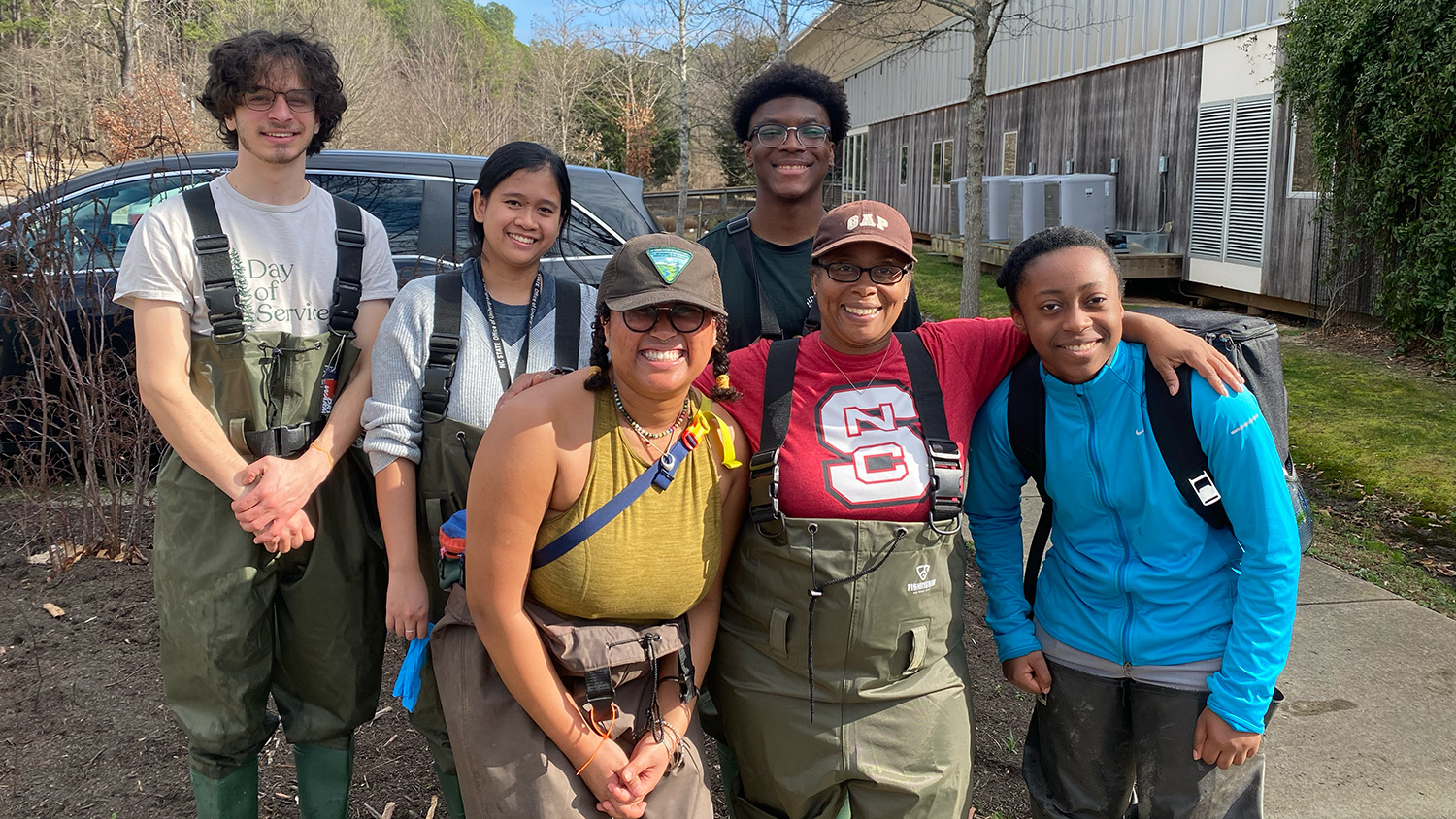Equitable Resilience: Developing Solutions to Urban Flooding in Raleigh’s Walnut Creek Watershed

What would you do if your basement flooded every time a heavy rain came? Some of you may be thinking you’d move to higher ground, but what if your neighborhood had historic roots you didn’t want to leave?
In the Walnut Creek Watershed, residents have routinely contended with nuisance flooding. Their homes in Rochester Heights and Biltmore Hills form some of the first traditionally African-American neighborhoods in southeast Raleigh, but often in heavy rain, basements fill up, yards turn to mush, and flooded roads block exits.
NC State’s Dr. Louie Rivers, an assistant professor of forestry and environmental resources, is teaming up with the Walnut Creek Wetland Community Partnership and Partners for Environmental Justice to help these residents identify resourceful solutions everyone can agree on.
Looking to the Past
Rivers explains the problem is bigger than slow-to-drain storm water. It’s about environmental justice, a phrase coined in the 1980s after creation of the Warren County landfill in eastern North Carolina. Buried in the majority African-American county was PCB-laced soil, the carcinogenic remains of an illegal toxic dump a few years earlier.
“Environmental justice is the idea that, traditionally, a disproportionate amount of environmental harm is placed on minority or marginalized neighborhoods,” Rivers explains.
Environmental justice is so important in natural resources because without it, the marginalized become recipients of society’s harms.
Rivers suggests we all contribute to pollution, greenhouse gases and other environmental hazards, so we should all bear their effects.
He’s working with Christy Perrin of the Water Resources Research Institute of the UNC System (WRRI) and NC State colleague Dr. Ryan Emanuel to level the playing field.
Creating a Community Roadmap
One of Rivers’ primary projects includes the Walnut Creek Watershed.
In a study initially funded by American Rivers, researchers and community leaders surveyed local residents along the watershed and set up focus groups. Participants identified nuisance flooding as one of their top frustrations.
In response, St. Ambrose Episcopal Church, a landmark of the community, has hosted one of the first green infrastructure projects — a demonstration rain garden that slows water runoff while filtering its pollutants. Project participants hope it’s the first of many practical solutions.
With a three-year grant from The Conservation Fund, Rivers and community partners are working to make that a reality. In its second year, the extended project began with the formation of a new task force that’s currently narrowing down options to a list of ten additional storm-water solutions. By November, the group intends to taper down the list to three shovel-ready designs.
Thinking Outside the Box
What makes Rivers excited about this work is it’s community driven. Much like the decision to clean up Walnut Creek in the 1990s, this project has community buy-in, which gives it a significant chance for success.
Other factors in its favor include the strong backing of the City of Raleigh. When the Walnut Creek Wetland Community Partnership formed in 2014, representatives from the city were fully committed, and they’ve continued to be present and involved in the years since.
One of the unique challenges of the Walnut Creek Watershed is the fact that it spans several jurisdictions, including Raleigh, and a strong need exists for a coordinator who can work across those borders.
Rivers explains that likely means more money and potentially more regulations, but he insists that having a strong impact on long-term sustainability requires thinking outside the box to manage environmental concerns across city borders.
The same could be said for broader environmental justice issues. Rivers will continue working toward innovative solutions, ways to address storm-water runoff and other challenges without causing gentrification. He suggests a happy medium in which communities are “green enough — environmentally friendly, but not so much that it drives people out of their neighborhoods.”
- Categories:


